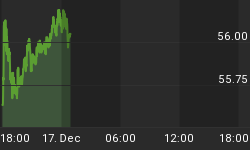For a long time, we have been commenting that the Institutional Investors are the big, controlling players in the stock market. Part of the reason was that they were responsible for over half the trading volume on an average day.
Now, some say "high frequency traders" are the big guns because they are commonly responsible for over half the trading volumes.
So, are "high frequency traders" really the new big guns now?
Our answer is no. No, because there is a big difference between someone who "owns" a home, and someone who "rents" a home or an apartment. One is an "owner" or holder of property, the other is a "renter" or lessee of property. One has the capital to take possession, the other has capital to buy time from the owner.
That's where high frequency traders come in. They are dealing with "time". They trade differentials that exists within fractions of a second. They take advantage of that disparity and trade the pricing imbalance based on the time advantage. That is the reason why many of these HFT's move their operations as close to the trading centers as they can ... so they can get additional time advantages. Because of this, many Wall Streeters consider them scalpers, much like someone scalping a ticket at a ball game who never sits in the seat.
That takes us back to Institutional Investors. Because they are owners, and not renters, they are still the big guns. They may not be the ones making the most trades per day, but they still are the ones that own the most property (stocks). The chart below illustrates why "their buying and selling" is important.
Today's chart shows when Institutional Investors were or are in Accumulation, Distribution, or an advancing or declining stage of each.
The importance of this data is that it shows that the market does not, nor can it go in a different direction for very long. Most of the times that there is a disparity between the stock market and the direction of the Institutional Accumulation/Distribution is because there is a positive or negative divergence which points to important Institutional Investor counter-action. Look at the May/June Positive divergence for example ... that positive divergence said that Institutional Investors were picking up the bargains and it meant that they were buyers when others were sellers.
Wall Street spends millions and millions of dollars on stock market data, but what they can't do is hide what they dowith that "data/information" because of charts like this. And ... if you can watch what they do, you can have the same advantage they have.
(FYI ... This Institutional Accumulation/Distribution chart is updated every morning before the market opens and can be found on the Standard subscriber site in Section 4 as Chart #7.)
















